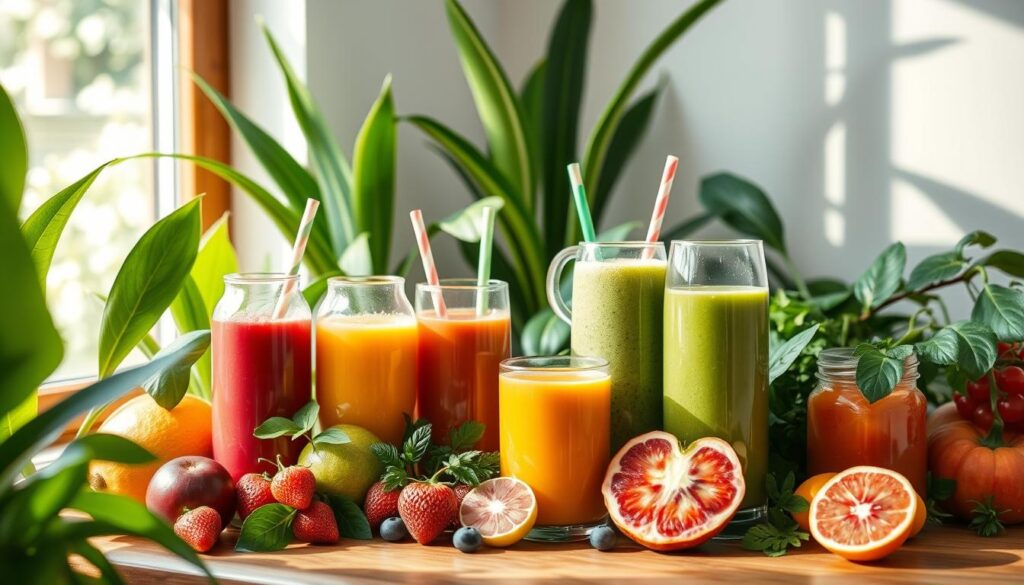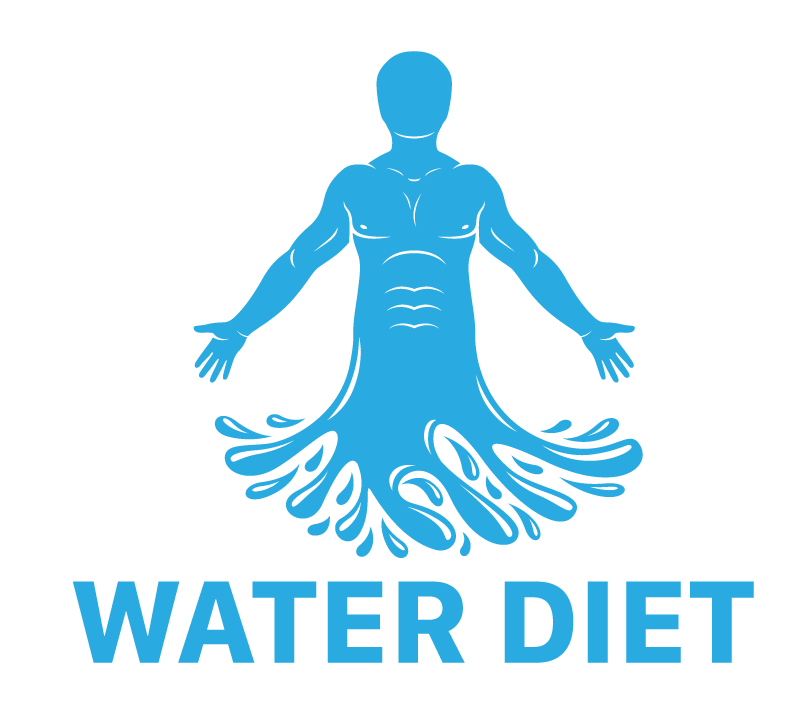Starting a liquid diet means paying close attention to nutrition and hydration. A full liquid diet includes fluids and foods that are liquid at room temperature. It’s a temporary fix for medical procedures or swallowing issues. But, it’s key to make sure it has enough energy, protein, and fat for daily needs, while staying hydrated.
It’s not just about avoiding solid foods. It’s about finding the right balance of nutrition and hydration for health.
When aiming for a water-based liquid diet, it’s important to think about fiber and blood sugar levels, especially for diabetics. Drinking water, fruit juices, broths, and milk, along with vitamins and supplements like Ensure, can help meet nutritional needs. But, always work with healthcare providers and dietitians to avoid nutrient gaps and keep a balanced diet long-term.
Key Takeaways
- Full liquid diets should be rich in energy, protein, and healthy fats to sustain overall health.
- Proper guidance from healthcare professionals is crucial, especially for individuals with health conditions like diabetes.
- Fiber is typically absent in liquid diets, which can affect digestive health and requires alternate forms of intake.
- Vitamins and mineral supplements are often necessary to compensate for potential nutrient deficiencies.
- Hydration plays a pivotal role in the effectiveness of a liquid diet—both in preventing dehydration and ensuring nutrient absorption.
- Continuous dietary assessment by a dietitian is vital for those on long-term liquid diets to prevent malnutrition.
- Understanding and recognizing the signs of dehydration can help in maintaining a successful liquid diet.
Understanding Full Liquid Diets: A Primer
Doctors often suggest a full liquid diet for health issues or before surgery. This diet keeps nutrients flowing while avoiding solid foods. It helps with recovery and managing health.
What Constitutes a Full Liquid Diet
A full liquid diet includes all liquids and foods that become liquid at room temperature. It’s easy on the stomach, perfect for post-surgical nutrition and those with dysphagia. Foods like broths, milk, and creamy soups are good examples. They’re tasty but don’t have solid pieces to make digestion easier.
The Role of Full Liquid Diets in Medical Scenarios
Full liquid diets are key in digestive tract surgeries. They act as a bridge between a clear liquid diet and solid foods. This helps patients adjust to eating normally while still getting nutrients. It aids in healing and keeps energy and hydration levels up.
Transitioning from Clear to Full Liquid Diets
Going from a clear liquid diet to a full liquid diet is a big step. It’s for those recovering from stomach surgeries or having trouble swallowing. It’s a way to get the digestive system ready for more food. This is especially important for those with dysphagia or looking to eat normally again.
Knowing about full liquid diets is helpful in many health situations. It’s key for pre-surgical nutrition and managing dysphagia. The right diet can make a big difference in recovery and health.
Essential Components of Liquid Nutrition
When you’re on a liquid diet, it’s key to keep your nutrition balanced. You need to know about liquid diet nutrients, make sure you get enough calories and protein, and stay hydrated.
Calories and Protein: Meeting Daily Requirements
Studies say to aim for 1,350 to 1,500 calories a day and 45 grams of protein. This helps meet your energy needs without stressing your stomach, especially when you’re recovering.
Protein is important for fixing tissues and keeping your immune system strong. You can get it from smooth protein shakes, soups with pureed meats or tofu, and milk or soy drinks.
Maintaining Healthy Hydration on a Liquid Diet
Hydration isn’t just about drinking water. It also includes other fluids and electrolytes like sodium and potassium. These are key for your cells and keeping fluids balanced. You should choose hydrating liquids that fit your health needs and likes.
Clear broths and herbal teas can be soothing. Fruit juices (without pulp) and sports drinks give energy and electrolytes. Drink these fluids often to keep your body hydrated without upsetting your stomach.
Even though a liquid diet is mostly liquids, it’s important to get all nutrients for your body’s functions and recovery. Always talk to your healthcare provider to make sure your diet is right for you and to check how it’s working.
Balancing Nutrition and Hydration with a Water-Based Liquid Diet
Starting a water-based diet might seem hard, but it’s actually good for your health. It helps with liquid diet weight loss and keeps you hydrated. It’s important to choose liquids that are full of nutrients, not just water.
For weight management or better health, knowing how to mix hydration and nutrition is key. A good liquid diet includes drinks that are both tasty and nutritious. This can be homemade broths or smoothies packed with vitamins.
- Broths made from simmering vegetables and lean meats provide both hydration and vital nutrients.
- Smoothies that blend leafy greens with high-water content fruits create a nutrient powerhouse that also aids hydration.
- Milk alternatives enriched with calcium and vitamin D offer both hydration and necessary dietary minerals.
Here’s a table that shows what to look for in a liquid diet. It helps keep you hydrated and nourished:
| Nutrient | Function | Common Liquid Sources |
|---|---|---|
| Water | Hydration, cellular health, digestion | Water, herbal teas, infused waters |
| Proteins | Tissue repair, immune function | Broths, milk, protein shakes |
| Fats | Energy source, nutrient absorption | Smoothies with avocados, nut milks |
| Carbohydrates | Energy provision | Fruit juices, vegetable broths |
| Vitamins/Minerals | Various bodily functions | Vegetable juices, fortified dairy alternatives |
Following a water-based diet means more than just drinking water. It’s about getting the right nutrients for your body. This diet has many liquid diet benefits, like better digestion and faster nutrient absorption.
By following these tips, you can make a liquid diet weight loss plan that works well. It fits into a healthy lifestyle, gives you the nutrients you need, and keeps you hydrated.
Recipes and Meal Planning for Liquid Diets
Starting a liquid diet might seem hard at first. But with the right recipes and meal planning, it can be fun and healthy. Let’s explore how to make a liquid diet that tastes good and is good for you.
Creating a Balanced Liquid Diet Menu
To make a balanced liquid diet menu, mix different fluids rich in nutrients. Include smoothies, strained soups, and high-protein shakes. Use powdered proteins and nonfat dry milk for extra nutrition.
Thinned yogurts and pureed meats add protein. Clear juices or broths from fruits and veggies add antioxidants and vitamins. But, avoid high-fiber and high-fat foods to keep your digestive system happy.

Liquid Diet Recipes for Energy and Satisfaction
When making liquid diet recipes, aim for flavor and nutrition that keeps you energized and full. Here are some examples:
- Breakfast Smoothie: Blend a banana, protein powder, almond milk, and spinach for a nutritious start.
- Lunch Soup: Mix pureed pumpkin, vegetable broth, ginger, and turmeric for a comforting meal.
- Afternoon Shake: Combine cooked oats, honey, protein powder, cinnamon, and low-fat milk for a protein-packed treat.
- Dinner Broth: Simmer fish or chicken bones with herbs, then strain and serve for a mineral-rich dinner.
These recipes keep you hydrated, provide nutrients, and are low in calories. Always talk to a nutritionist or healthcare provider before starting a new diet to make sure it’s right for you.
Adapting Liquid Diets for Long-Term Nutritional Support
Adapting to a long-term liquid diet needs careful planning. It’s especially important for nutritional support in different health situations. A good plan should include all nutrients needed for daily life and health.
Liquid diets are often used short-term, like for medical prep or stomach issues. They focus on easy digestion and staying hydrated. But for long-term use, it’s crucial to avoid nutritional deficiencies.
When adapting liquid diets for the long haul, I focus on monitoring and adjusting. This ensures the diet meets individual needs, which can change due to age, health, or dietary restrictions. It’s about providing the right mix of protein, vitamins, and calories for each person’s energy needs.
In places like the US, it’s hard to eat a balanced diet because of high-energy foods. Liquid diets must offer balanced nutrients without solid foods. For older adults or those recovering from serious health issues, getting enough nutrition is especially tough.
Here’s a basic outline for a long-term liquid diet:
- Energy-rich fluids like strained or blended fruit juices.
- Protein sources such as milk, soy, or pea protein drinks.
- Electrolyte solutions and broths for hydration and sodium.
- Specialized nutritional supplements tailored to individual needs, often with a healthcare provider’s help.
Studies show nurses play a big role in managing nutrition, especially in long-term care. They help ensure the diet meets individual health needs, reducing the risk of nutrient deficiencies.
| Nutrient | Importance | Typical Sources in Liquid Diet |
|---|---|---|
| Protein | Supports tissue repair and growth | Milk, soy, pea protein powders |
| Calories | Energy provision | Calorie-dense smoothies, juice blends |
| Electrolytes | Regulates nerve and muscle function | Electrolyte solutions, broths |
| Vitamins | Supports immune system, prevents deficiencies | Fruit and vegetable juices, specially formulated supplements |
Success with a long-term liquid diet goes beyond just picking the right ingredients. It’s about ongoing communication between individuals and their healthcare teams. This ensures the diet stays effective and meets changing health needs.
The Psychological and Physical Effects of Liquid Dieting
Starting a liquid diet can change your life a lot. It affects digestive health and emotional well-being. These diets are sometimes needed for health reasons. But, not eating solid foods can cause many changes in your body and mind.
Understanding the Impact on Digestive Health
Liquid diets can change how your digestive system works. Eating only liquids can slow down your digestion. This might cause constipation or diarrhea.
Long-term effects could also change your gut microbiota. This is important for your health. Drinking enough water can help with these problems.
Research on hydration shows it’s key for your gut and overall health. Staying hydrated can make it easier to go back to eating solid foods.
Managing Emotional Well-being While on a Liquid Diet
Liquid diets can affect your mood a lot. They can make you feel lonely or sad because you can’t eat with others. Mood swings are common because your body is getting different nutrients.
Seeing a healthcare provider is important. They can suggest changes or supplements to help with emotional issues. Talking to a counselor or joining a support group can also help.

Going on a liquid diet is more than just eating different foods. It’s about understanding and dealing with its effects on your mind and body. Taking a holistic approach can help you stay healthy and sane during tough times.
Conclusion
Water-based liquid diets are more than just for losing weight or detoxing. They are journeys that need a balance of nutrition and hydration. We’ve learned how important it is to find this balance and keep our diets sustainable. Balanced nutrition is key, and we must approach liquid diets with care.
Looking back, we see how crucial it is to slowly add solid foods back into our diet after fasting. Water makes up a big part of our bodies, especially in babies and the elderly. It’s important to get enough water from both liquids and solid foods.
In the US, a lot of our water comes from the food we eat. The USDA National Nutrient Database helps us know how much water is in our food. This helps keep our bodies balanced and healthy.
Exploring liquid diets has been eye-opening. They offer many benefits, like boosting metabolism and starting autophagy. But, we must remember that a sustainable liquid diet is more than just drinking water. It’s about living a lifestyle that values hydration and natural resources.
As we move forward in our journey of nutritional health, let’s remember the importance of water in our diets. Let’s keep nourishing our bodies and minds for the long haul.




